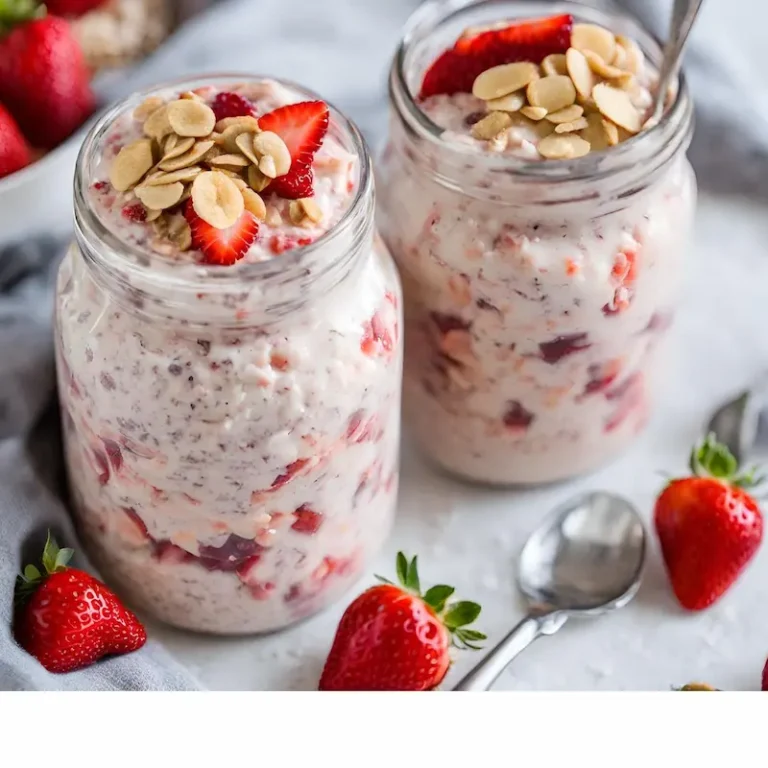There are many reasons why a higher protein diet seems to be such a hot topic: research has consistently shown it can assist with weight management and changes in body composition. The minimum recommended protein intake is no longer ideal- this post discusses tips to reach 120 grams of protein per day with a sample meal plan.

A higher protein diet helps to slow down how quickly our food is digested, keeping us fuller for longer. It’s also very important in the preservation of lean muscle mass when in a calorie deficit. This post acts as a comprehensive guide to help you increase your protein intake, including topics such as:
- How much protein is ideal to consume per day.
- The ideal amount of protein to consume at each meal to reach 120 grams of protein (30/30/30).
- Ideas for increasing protein intake at breakfast.
- Building a meal high in protein.
- 120 grams of protein/day sample meal plan(s) with high protein recipes.
- High protein food swaps.
How Much Protein Should You Eat?
The amount of protein recommended per day will depend on a number of factors, and these recommendations vary widely. Consuming 0.35 grams per pound of body weight is the minimum amount to preserve lean muscle mass.
However, the American College of Sports Medicine recommends 0.5-0.8 grams per pound of body weight for those who are physically active. This amounts to 75-120 grams of protein for a 150 pound woman.
Further, studies have shown that 20-30 grams is the “ideal” amount of protein to eat at each meal to promote muscle protein synthesis, and aid in digestion and absorption. Most studies show that eating more than 40 grams per meal does not have additional benefits. Therefore, in order to reach 120 grams it’s best to distribute your protein evenly throughout the day.
I should note that a recent study published in 2023 found that the previous recommendation of consuming 20-25 grams of protein might be outdated – and the “ideal” amount of protein per meal is actually higher. We will have to stay tuned for more research!
How to Consume 120 Grams of Protein Per Day
Studies have shown that those who distribute protein evenly throughout the day are more likely to reach a higher overall total protein intake. Therefore, to consume 120 grams of protein per day it is recommended to aim for 30 grams of protein for meals with two snacks consisting of 15 grams of protein.
It might take a little more prep and planning, but with increased awareness of how to build a higher protein meal it gets easier and easier! Keep scrolling for a 7-day meal plan of high protein recipes and snacks!
Benefits of A Higher Protein Diet
Below are just some of the benefits of consuming a higher protein diet.
- Increases meal satiety and satisfaction.
- May protect against fat gain and promote positive changes in body composition.
- High protein meals may lead to less mindless snacking and reduced overall caloric intake.
- Helps to preserve lean muscle mass, especially when in a calorie deficit.
- Increases the rate of muscle protein synthesis leading to higher muscle mass.
- Of all the macronutrients, protein takes the longest to digest. This aids in stabilizing blood sugar levels and increases calorie expenditure during digestion.
Related Posts:
— 30 Breakfasts with 30 Grams of Protein
— High Protein Plant-Based Meals with At Least 20 Grams of Protein
— 1700 Calorie High Protein Meal Plan
— The Benefits of a High Fiber, High Protein Diet with Meal Plans
Building a High Protein Meal
Most animal protein sources typically contain at least 20 grams of protein per 4 ounce serving (which is about the size of a deck of cards).
High protein plant-based sources include beans, seitan, tofu, tempeh and hemp. For more info on high protein plant-based diets, read how to get 120 grams of protein as a vegetarian.
Think about other foods which may also add some protein – cheese, dairy products, bread, whole grains, lentils, nuts and seeds. When consuming a higher protein diet, it’s all about those little additions we can incorporate – instead of restrict.

How to Increase Protein At Breakfast
Breakfast seems to be the hardest meal to consume adequate protein. Eggs are only 6 grams of protein, so eating two amounts to about 12 grams. How can you get up to 30 grams of protein at breakfast?
- Incorporate cottage cheese or Greek yogurt. Add cottage cheese to your scrambled eggs. Eat a side of Greek yogurt and berries with your eggs.
- Smoothies – most protein powders contain about 20 grams of protein per scoop, so smoothies can be a quick and easy way to get those 30 grams. However, it’s important to note that our body will digest them faster due to the ingredients being already broken down.
- Overnight Oats with protein power and Greek yogurt.
- Combine oatmeal and milk, top with hemp hearts.
- Sprinkle hemp hearts on top of smoothies, egg dishes, and oatmeal.
- Add beans or tofu to egg dishes.
- Think about eating “non-breakfast” foods. There is no rule that says breakfast has to be eggs or oatmeal. Using chicken, salmon, beef, and sausage can give any breakfast a boost in protein.
- High protein waffle and pancake mixes – compare food labels.
120 Grams of Protein Per Day Sample Meal Plan(s)
To achieve 120 grams of protein per day, each meal should contain about 30 grams of protein, with the addition of 1-2 snacks (with 15-30 grams) depending on your preferences and lifestyle. Below are recipes for meals which are estimated to be 30 grams of protein per serving and some snack ideas!
Breakfast
~30 gram protein breakfast ideas:
— High Protein Kodiak Waffles from The Sweet Simple Things; 309 calories, 31g protein.
— Savory Quinoa Breakfast Bake; 383 calories, 26.5g protein.
— Dairy-Free Baked Protein Oatmeal from Fit as a Mama Bear; 290 calories, 25g protein.
— Cottage Cheese Scrambled Eggs: 1/2 cup cottage cheese (14g protein) + 2 eggs (12g protein) + cheese (4g protein).
— Berry Cheesecake Overnight Oats; 387 calories, 37g protein.
— High Protein Overnight Oats from Summer Yule; 318 calories, 25g protein.
— Protein Smoothies: Pumpkin Protein Shake from Fit Mama Real Food.
— High Protein Vegan Oatmeal from Bites with Blair; 451 calories, 30g protein.
— More Ideas: High Protein Breakfast Ideas Without Eggs.

Lunch
~30g protein lunch ideas:
— Curry Chicken Salad with Grapes and Celery from Fit Mama Real Food; 313 calories, 30g protein.
— Turkey, Corn and Black Bean Chili from Life as a Strawberry; 389 calories, 30g protein.
— Easy Bruschetta Chicken from Ann’s Entitled Life; 270 calories, 38g protein.
— Tuna and Cannellini Bean Salad from Christina’s Cucina; 398 calories, 30g protein.
— Shrimp Taco Bowl; 477 calories, 40g protein.

Dinner
~30g protein dinner ideas:
— Chicken Fajitas from Simply Living Recipes ; 261 calories, 34g protein.
— Baked Pesto Salmon from Garlic and Zest; 399 calories, 38g protein.
— Crockpot Creamy White Chicken Chili from Begin with Balance; 336 calories, 34g protein.
— Chicken Alfredo Spaghetti Squash; 339 calories, 43g protein
— Vegan Roast Beef from Vegan Dollhouse; 199 calories, 26g protein.
Snack Ideas with 15 Grams of Protein (Pick Two, Ideally)
Snacks with ~15 grams of protein:
— High Protein Mini Strawberry Cheesecake Cups; 88kcal, 15g protein. These are made with a combination of Greek yogurt and protein powder.
— 1/2 cup Tuna Salad; 150 calories, 15g protein.
— 1/2 cup Greek Yogurt; 80 calories, 14g protein.
— Chocolate Cheesecake Protein Pudding; 200 calories, 36g protein.
— 1/2 cup Cottage Cheese; 80 calories, 14g protein (add a tablespoon of hemp hearts for additional 5 grams of protein).
— Vegetarian snacks with 10+ grams of protein.
— Turkey and Crackers; 200 calories, 23g protein.

High Protein Food Swaps
Here are some high protein food swaps to make the most out of basic meals! Instead of consuming more ounces of meat, think about what you can add to meals to increase the protein content. Those small additions that you might not think of can make a big difference when trying to increase overall protein consumption. For more ideas, read Grocery List Staples to Increase Protein Content (That Aren’t Meat).
- Parmesan Cheese –> Nutritional Yeast
- Nuts –> Hemp Hearts
- Pasta –> Barilla Protein+ or Banza Pasta
- Heavy Cream –> Cottage Cheese or Greek Yogurt
- Pancakes –> Kodiak Cakes
- Regular Yogurt –> Greek Yogurt
- Milk in Smoothies –> Greek Yogurt and Water
- White Rice –> Quinoa
A Few More Thoughts
As discussed, there are many advantages to consuming a diet adequate in protein, from preserving lean muscle mass to promoting weight management.
Protein needs vary depending on your weight, lifestyle, and certain medical conditions- among other factors. Keep in mind that it is not recommended to consume more than 2 grams of protein per kilogram of body weight per day. For instance, if you weigh 120 pounds this equates to 110 grams of protein.
So whether you’re just looking to increase your protein intake or to consume 120 grams per day, I hope this post contained easy to understand information to reach that goal. It just might take a little more planning than you’re used to.
